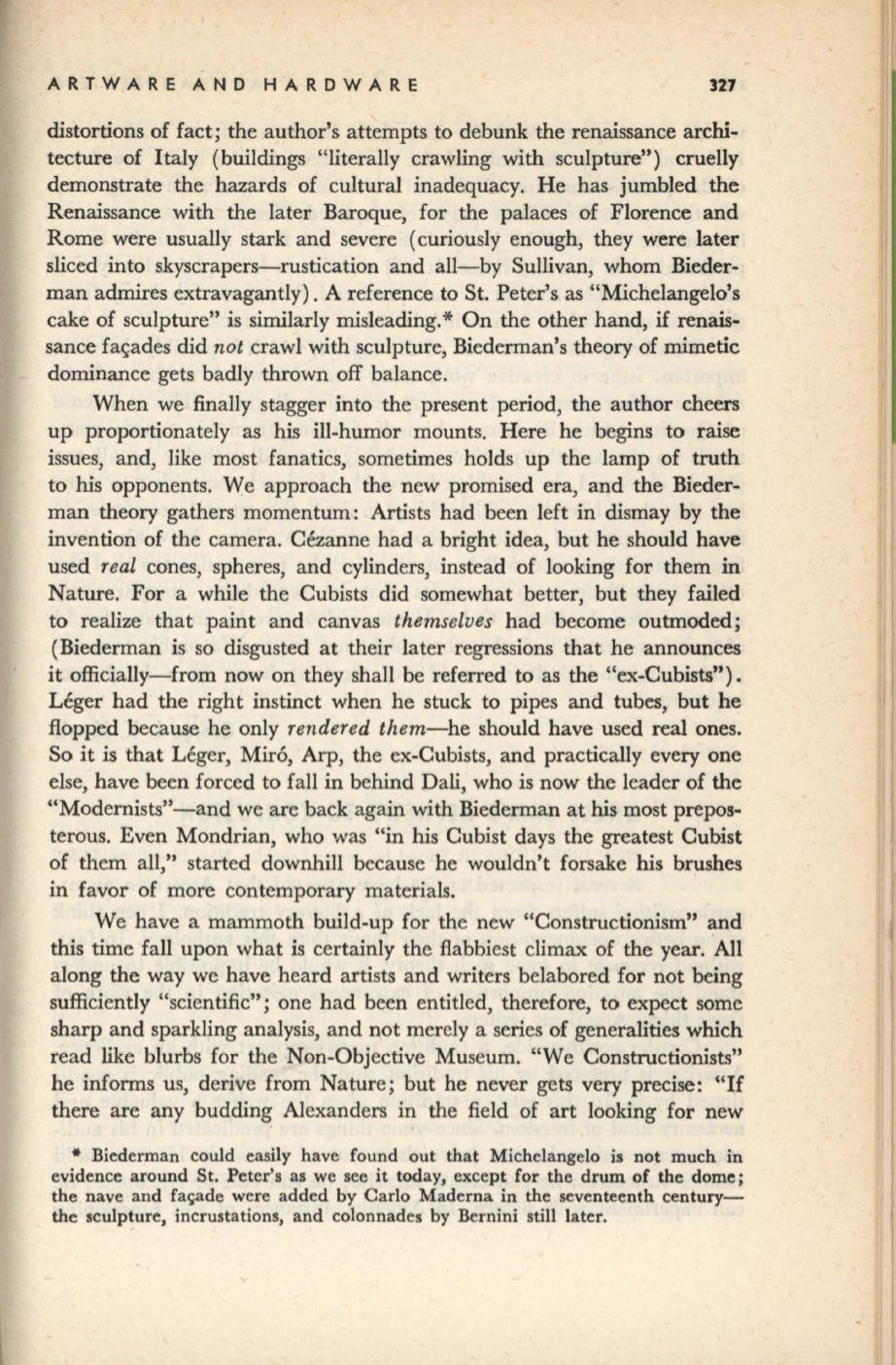
ARTWARE AND HARDWARE
327
distortions of fact; the author's attempts to debunk the renaissance archi–
tecture of Italy (buildings "literally crawling with sculpture") cruelly
demonstrate the hazards of cultural inadequacy. He has jumbled the
Renaissance with the later Baroque, for the palaces of Florence and
Rome were usually stark and severe (curiously enough, they were later
sliced into skyscrapers-rustication and all-by Sullivan, whom Bieder–
man admires extravagantly). A reference to St. Peter's as "Michelangelo's
cake of sculpture" is similarly misleading.* On the other hand,
if
renais–
sance fac;ades did
not
crawl with sculpture, Biederman's theory of mimetic
dominance gets badly thrown off balance.
When we finally stagger into the present period, the author cheers
up proportionately as his ill-humor mounts. Here he begins to raise
issues, and, like most fanatics, sometimes holds up the lamp of truth
to his opponents. We approach the new promised era, and the Bieder–
man theory gathers momentum: Artists had been left in dismay by the
invention of the camera. Cezanne had a bright idea, but he should have
used
real
cones, spheres, and cylinders, instead of looking for them in
Nature. For a while the Cubists did somewhat better, but they failed
to realize that paint and canvas
themselves
had become outmoded;
(Biederman is so disgusted at their later regressions that he announces
it officially-from now on they shall be referred to as the "ex-Cubists").
Leger had the right instinct when he stuck to pipes and tubes, but he
flopped because he only
rendered them-he
should have used real ones.
So it is that Leger, Mir6, Arp, the ex-Cubists, and practically every one
else, have been forced to fall in behind Dali, who is now the leader of the
"Modernists"-and we are back again with Biederman at his most prepos–
terous. Even Mondrian, who was "in his Cubist days the greatest Cubist
of them all," started downhill because he wouldn't forsake his brushes
in favor of more contemporary materials.
We have a mammoth build-up for the new "Constructionism" and
this time fall upon what is certainly the flabbiest climax of the year. All
along the way we have heard artists and writers belabored for not being
sufficiently "scientific"; one had been entitled, therefore, to expect some
sharp and sparkling analysis, and not merely a series of generalities which
read like blurbs for the Non-Objective Museum. "We Constructionists"
he informs us, derive from Nature; but he never gets very precise:
"If
there are any budding Alexanders in the field of art looking for new
*
Biederman could easily have found out that Michelangelo is not much in
evidence around St. Peter's as we see it today, except for the drum of the dome;
the nave and
fa~de
were added by Carlo Maderna in the seventeenth century–
the sculpture, incrustations, and colonnades by Bernini still later.


